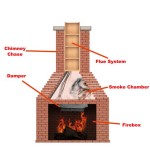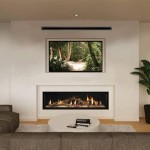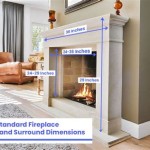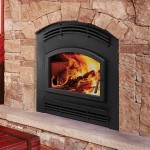Vented vs. Ventless Gas Fireplace: A Comparative Analysis
Gas fireplaces offer a convenient and aesthetically pleasing alternative to traditional wood-burning fireplaces. They provide warmth, ambiance, and can serve as a focal point in a living space. However, potential buyers are often faced with the decision of choosing between a vented and a ventless gas fireplace. Both types have their advantages and disadvantages, making the selection process dependent on individual needs, budget, and safety concerns. This article provides a comprehensive comparison of vented and ventless gas fireplaces, highlighting their key features, operational differences, installation requirements, and safety considerations.
Understanding Vented Gas Fireplaces
Vented gas fireplaces, as the name suggests, require a venting system to expel combustion byproducts, such as carbon monoxide, outside of the dwelling. These fireplaces typically resemble traditional wood-burning fireplaces more closely, offering a more realistic flame appearance and the option of a larger viewing area. The venting system can be a chimney, a B-vent, or a direct vent, each having specific installation requirements and performance characteristics. The selection of the venting system depends on the fireplace model, building codes, and existing structural features.
The operational principle of a vented gas fireplace involves the burning of natural gas or propane within a firebox. The combustion process generates heat and releases combustion byproducts. The venting system draws these byproducts up and out of the dwelling, ensuring that they do not accumulate indoors. The air required for combustion is typically drawn from the room, which can slightly reduce the overall heating efficiency of the fireplace.
Installation of a vented gas fireplace can be more complex and costly than that of a ventless model. A chimney or venting system needs to be present, or installed, adhering to strict building codes and manufacturer specifications. This may involve structural modifications to the building, adding to the overall expense. Professional installation is generally recommended to ensure proper functionality and safety.
Aesthetic appeal is a significant advantage of vented gas fireplaces. They often feature realistic-looking logs, larger viewing areas, and a more authentic flame pattern. The flame is typically brighter and more dynamic than that of a ventless model, mimicking the appearance of a wood-burning fire. This makes them a popular choice for homeowners seeking a traditional fireplace experience.
Safety is paramount with any type of gas fireplace, and vented models offer a higher level of safety in terms of carbon monoxide mitigation. The venting system effectively removes harmful gases from the dwelling, reducing the risk of carbon monoxide poisoning. However, regular inspection and maintenance of the venting system are crucial to ensure its proper functionality. Any obstructions or leaks in the vent can compromise its effectiveness and pose a safety hazard.
Exploring Ventless Gas Fireplaces
Ventless gas fireplaces, also known as vent-free gas fireplaces, do not require a venting system. They burn gas more efficiently and are designed to be installed in locations where venting is not feasible or practical. These fireplaces incorporate oxygen depletion sensors (ODS) that shut off the gas supply if the oxygen level in the room drops to a dangerous level, preventing carbon monoxide buildup.
The operational principle of a ventless gas fireplace relies on a highly efficient combustion process. They are designed to burn gas almost completely, minimizing the production of carbon monoxide and other harmful emissions. However, some emissions are still produced, and the ODS is a critical safety feature that monitors the oxygen level and shuts off the gas supply if it detects a problem. Ventless fireplaces also release water vapor into the room, which can increase humidity levels.
Installation of a ventless gas fireplace is generally simpler and less expensive than that of a vented model. No venting system is required, which eliminates the need for structural modifications or chimney construction. However, ventless fireplaces must be installed in rooms that meet specific size and ventilation requirements to ensure adequate oxygen supply and prevent excessive humidity. Professional installation is still recommended to ensure proper gas line connections and safety system functionality.
Ventless gas fireplaces are generally more energy-efficient than vented models. Because they do not exhaust heated air through a venting system, a greater percentage of the heat generated remains in the room. This can translate to lower heating bills, especially in well-insulated homes. However, the increased humidity can also contribute to a feeling of warmth, potentially leading to lower thermostat settings.
Safety is a key consideration with ventless gas fireplaces. While the ODS system provides a crucial safety feature, it is essential to understand its limitations. The ODS is designed to shut off the gas supply if the oxygen level drops to a dangerous level, but it does not eliminate the risk of carbon monoxide poisoning altogether. Proper room size and ventilation are crucial to ensure the ODS functions effectively. Furthermore, ventless fireplaces should never be operated in bedrooms, bathrooms, or other enclosed spaces with limited ventilation. Carbon monoxide detectors should always be installed and maintained in homes with ventless gas fireplaces.
Key Differences and Considerations
The primary difference between vented and ventless gas fireplaces lies in the venting requirements and the safety mechanisms employed. Vented fireplaces rely on a venting system to remove combustion byproducts, while ventless fireplaces rely on efficient combustion and an ODS to mitigate the risks associated with carbon monoxide buildup. This difference influences installation complexity, cost, energy efficiency, and aesthetic appeal.
Installation cost is a significant factor to consider. Vented fireplaces typically require more extensive installation work, translating to higher costs. Ventless fireplaces are generally less expensive to install, but the room must meet specific size and ventilation requirements. These factors should be evaluated during the budgeting phase.
Energy efficiency is another important consideration. Ventless fireplaces are generally more energy-efficient because they do not exhaust heated air through a venting system. However, the increased humidity associated with ventless fireplaces can be a concern for some individuals, particularly those living in humid climates.
Aesthetic appeal is a subjective factor, but it plays a significant role in the decision-making process. Vented fireplaces often offer a more realistic flame appearance and a larger viewing area, making them a popular choice for homeowners seeking a traditional fireplace experience. Ventless fireplaces may not offer the same level of aesthetic realism, but they are available in a variety of styles and designs to complement different décor schemes.
Safety is of paramount importance when selecting any type of gas fireplace. Vented fireplaces offer a higher level of safety in terms of carbon monoxide mitigation, provided that the venting system is properly installed and maintained. Ventless fireplaces rely on the ODS system to prevent carbon monoxide buildup, but proper room size and ventilation are crucial for its effectiveness. Regular inspection and maintenance are essential for both types of fireplaces to ensure safe operation.
Local building codes and regulations must be consulted before installing any gas fireplace. Some jurisdictions may restrict or prohibit the installation of ventless gas fireplaces due to safety concerns. It is essential to comply with all applicable codes and regulations to ensure a safe and legal installation.
Maintenance requirements also vary between vented and ventless gas fireplaces. Vented fireplaces require regular inspection and cleaning of the venting system to ensure proper functionality and prevent blockages. Ventless fireplaces require periodic inspection of the ODS system and cleaning of the burner assembly. Following the manufacturer's recommendations for maintenance is crucial for both types of fireplaces.
Beyond carbon monoxide, other factors influence the choice. Vented gas fireplaces are less likely to introduce moisture into a room. While the amount of moisture produced by a properly functioning ventless gas fireplace isn’t extreme, in some climates the added humidity might become a concern for mold growth or discomfort. Additionally, vented gas fireplaces don’t alter the air composition of the room like ventless ones do. While the ODS system in a ventless system should prevent dangerous situations, some individuals are sensitive to even slight changes in air quality caused by combustion. This sensitivity could manifest as headaches or feelings of stuffiness.

Vented Vs Ventless Gas Logs What S The Difference

Vented Vs Ventless Gas Fireplace Logs

Vented Or Ventless Gas Fireplace Which One Is Better

Vented Vs B Vent Direct Free Dixie S

Gas Fireplaces Direct Vent Vs Free Fine Homebuilding

Vented Vs Ventless Gas Logs Differences How To Choose

Vented Vs Ventless Gas Logs Woodlanddirect Com

Are Vent Free Gas Fireplaces Safe Ventless

Direct Vent Vs Ventless Gas Fireplaces What S The Difference

Gas Logs Vented Vs Ventless Royal Oak Mi Fireside








